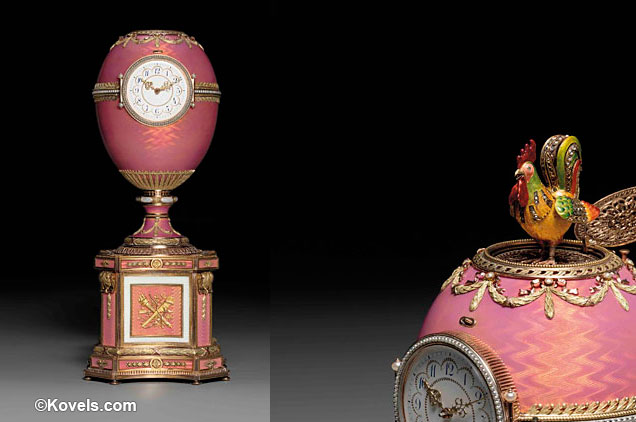What do Faberge eggs and dinosaurs have in common? Both made the news this week and there is a lesson for collectors from their stories–there is always the possibility of discovering a treasure. The Faberge egg in the news this past week was unknown to most of the experts. It belonged to the Rothschild family. The egg was given to Edouard de Rothschild and his bride-to-be in 1902 as an engagement gift from Rothschild’s sister. The gold and pink enameled egg has a diamond-set cockerel (young rooster) that pops up on the hour and flaps its wings, nods its head and opens its beak. It is signed and the history of the egg dates back to 1902. It is known that Faberge made 56 eggs for the Russian royal family and at least 12 for private citizens. Nine royal eggs were sold to a Russian billionaire in 2004. Christie’s of London is selling the Rothschild egg in November and expects $12 million to $18 million.
Dinosaur fossils have been found for centuries, but were thought to be from “dragons” or “giants.” It was not until 1842 that the word dinosaur was first used and a number of different dinosaurs were identified. The first bones found in the United States were discovered in New Jersey in 1858. By the end of the 19th century, dinosaur fossils had been found on almost every continent, even Antarctica. Other new species have been discovered in the past few years, including one that seemed to have feathers. The public is fascinated by dinosaurs and every discovery makes news. Dinosaur remains sell for high prices. A fossil of a nest of dinosaur eggs sold in 2006 for $420,000.
So when out buying collectibles, take a good look at the unfamiliar. You may find a treasure, an unknown doorstop design, an original McDonald’s stock certificate from 1965 (worth over $600 even if cancelled), or a string of real pearls in a box of costume jewelry. Part of the fun as a collector is finding the treasure that others have overlooked.




Leave a Reply
You must be logged in to post a comment.